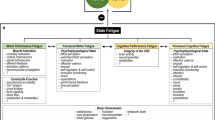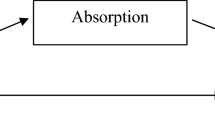Abstract
This study investigated the effect of display type, play-rest schedule and game type on visual fatigue, heart rate and mental workload for both genders during 1 h of Wii game playing. Twenty subjects participated in the experiment. Two display types (a 32-in CRT display and a 32-in plasma display), two different play-rest schedules (10 min play with 5 min rest, repeated four times; 20 min play with 10 min rest, repeated two times) and two Nintendo “Wii Sports” games (boxing and tennis) were used for evaluation. The study results showed that the display and game type had a significant effect on all the measurements. The use of a plasma display to play video games improved the critical flicker fusion (CFF) frequency threshold; however, it also caused a greater subjective eye-fatigue rating, increased heart rate, as well as higher mental workload. Subjects with a 5-min break for every 10 min played had a lower subjective eye-fatigue rating, heart rate and mental workload than with a 10-min break for every 20 min played. The gender effect was not significant on any of the measurements. Implications of the results regarding video-game playing are discussed in terms of display and game type. Playing video games with frequent short breaks is suggested for reducing visual fatigue, especially for intensive video games.








Similar content being viewed by others
References
Balci R, Aghazadeh F (2003) The effect of work-rest schedules and type of task on the discomfort and performance of VDT users. Ergonomics 46:455–465
Bosch PR, Poloni J, Thornton A, Lynskey JV (2012) The heart rate response to Nintendo Wii boxing in young adults. Cardiopulm Phys Ther J 23:13–29
Boucsein W, Thum M (1997) Design of work/rest schedules for computer work based on psychophysiological recovery measures. Int J Ind Ergon 20:51–57
De Marsico M, Levialdi S, Nappi M, Ricciardi S (2014) FIGI: floating interface for gesture-based interaction. J Ambient Intell Humaniz Comput 5:511–524
DFC Intelligence (2015) Worldwide video game market forecasts—April 2015. DFC intelligence report
Entertainment Software Association (2015) Essential facts about the computer and video game industry. Entertainment and Software Association (ESA) report
Fu M-H, Lee K-R, Pai M-C, Kuo Y-H (2012) Clinical measurement and verification of elderly LOHAS index in an elder suited TV-based home living space. J Ambient Intell Humaniz Comput 3:73–81
Galinsky TL, Swanson NG, Sauter SL, Hurrell JJ, Schleifer LM (2000) A field study of supplementary rest breaks for data-entry operators. Ergonomics 43:622–638
Graves L, Stratton G, Ridgers ND, Cable NT (2007) Comparison of energy expenditure in adolescents when playing new generation and sedentary computer games: cross sectional study. Br Med J 335:1282–1284
Graves LEF, Ridgers ND, Williams K, Stratton G, Atkinson G, Cable NT (2010) The physiological cost and enjoyment of Wii Fit in adolescents, young adults, and older adults. J Phys Act Health 7(3):393–401
Green CS, Bavelier D (2003) Action video game modifies visual selective attention. Nature 423:534–537
Green CS, Bavelier D (2006) Enumeration versus object tracking: insights from video game players. Cognition 101:217–245
Green CS, Bavelier D (2007) Action-video-game experience alters the spatial resolution of vision. Psychol Sci 18:88–94
Griffiths RP, Eastin MS, Cicchirillo V (2016) Competitive video game play: an investigation of identification and competition. Commun Res 43(4):468–486
Hart SG, Staveland LE (1988) Development of NASA-TLX (task load index): results of empirical and theoretical research. In: Hancock PA, Meshkati N (eds) Human mental workload. Elsevier Science Publishers, Amsterdam, pp 139–183
Hsu B-W, Wang M-JJ (2013) Evaluating the effectiveness of using electroencephalogram power indices to measure visual fatigue. Percept Mot Skills 116:235–252
Li Z, Jiao K, Chen M, Wang C (2004) Reducing the effects of driving fatigue with magnitopuncture stimulation. Accid Anal Prev 36:501–505
Lin CJ, Hsieh YH, Chen HC, Chen JC (2008a) Visual performance and fatigue in reading vibrating numeric displays. Displays 29:386–392
Lin T, Imamiya A, Mao X (2008b) Using multiple data sources to get closer insights into user cost and task performance. Interact Comput 20:364–374
Lucas K, Sherry JL (2004) Sex differences in video game play: a communication-based explanation. Commun Res 31:499–523
Marks DW, Rispen L, Calara G (2015) Greater physiological responses while playing XBox Kinect compared to Nintendo Wii. Int J Exerc Sci 8:164–173
Menozzi M, Lang F, Naepflin U, Zeller C, Krueger H (2001) CRT versus LCD: effects of refresh rate, display technology and background luminance in visual performance. Displays 22:79–85
Misawa T, Shigeta S, Nojima S (1991) Effects of video games on visual function in children. Nippon Eiseigaku Zasshi 45:1029–1034
Miyao M, Sugiura S, Sakata T, Ishigaki H (1997) The visual effect of video game on school children. In: Proceedings of the international conference on work with display units, Tokyo
O’Donovan C, Hirsch E, Holohan E, McBride I, McManus R, Hussey J (2012) Energy expended playing Xbox Kinect™ and Wii™ games: a preliminary study comparing single and multiplayer modes. Physiotherapy 98:224–229
Scheer K, Siebrant S, Brown G, Shaw B, Shaw I (2014) Wii, kinect, and move. Heart rate, oxygen consumption, energy expenditure, and ventilation due to different physically active video game systems in college students. Int J Exerc Sci 7:22–32
Takahashi M (2006) Ergonomic issues in picture quality improvement in flat panel TVs, Nikkei Microdevices’ flat panel display: 2006. Nikkei Business Publications, Inc, Tokyo, Japan, pp 58–63
Wang MJJ, Huang CL (2004) Evaluating the eye fatigue problem in wafer inspection. IEEE Trans Semicond Manuf 17:444–447
Westelaken R, Hu J, Liu H, Rauterberg M (2011) Embedding gesture recognition into airplane seats for in-flight entertainment. J Ambient Intell Humaniz Comput 2:103–112
Williams KD (2014) The effects of dissociation, game controllers, and 3D versus 2D on presence and enjoyment. Comput Hum Behav 38:142–150
Yamada F (1998) Frontal midline theta rhythm and eye blinking activity during a VDT task and a video game: useful tools for psychophysiology in ergonomics. Ergonomics 41:678–688
Yuji H (1996) Computer games and information-processing skills. Percept Mot Skills 85:643–647
Author information
Authors and Affiliations
Corresponding author
Rights and permissions
About this article
Cite this article
Chen, SJ., Kang, YY. & Lin, CL. Ergonomic evaluation of video game playing. J Ambient Intell Human Comput 7, 845–853 (2016). https://doi.org/10.1007/s12652-016-0386-z
Received:
Accepted:
Published:
Issue Date:
DOI: https://doi.org/10.1007/s12652-016-0386-z




